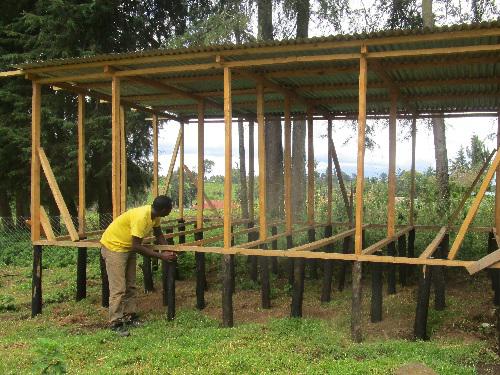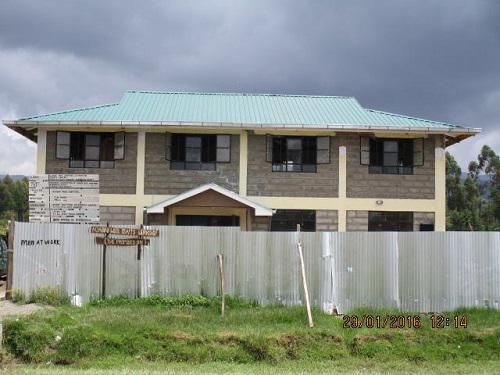Mercy Nyambura Kariuki
Other projects
The project aims to increase grassland cover and quality through advancing the ‘sheep for longclaw’ and improved farmers’ management capacity

Construction of the sheep shed in progress.
Kinangop Plateau in Kenya is important for agricultural and for its unique highland grassland biodiversity. Recognized internationally as an Important Bird Area, it hosts among others, two endangered and nationally endemic bird species i.e. Sharpe’s Longclaw and Aberdare Cisticola. It is the global stronghold for the Sharpe’s Longclaw. The grasslands provide pasture, water-holding and carbon storage services. Unfortunately, grasslands are quickly being lost as farmers reduce the scale of livestock keeping in favour of crop production as a result of poor institutional support facilities for livestock production. The current grassland cover is less than 20% of the original. The greatest potential for grassland conservation appears to lie in enhancing the viability of animal husbandry as demonstrated through an ongoing wool-spinning project. Livestock farming can be more profitable, maintains soil fertility for longer and is less labour intensive than crop production, especially if proper breeds are kept and properly managed. If farmers could take up profitable animal husbandry, they could increase grassland cover within their properties.

Njabini wool spinning workshop.
The proposed work is aimed at increasing grassland cover and quality through advancing the ‘sheep for longclaw’ project, previously funded by Rufford small grant fund. The main aim of the scheme was to avail proper breeds of sheep as an incentive to retaining grasslands. This just-concluded project identified poor management as the main limitation to successful sheep husbandry for grassland conservation. Therefore, this proposed follow-up project aims to improve sheep farmers’ management capacity by focusing on empowering farmers to apply good management practices e.g. deworming, paddocking and housing as an incentive to retaining optimal grasslands that are suitable for the Sharpe’s Longclaw. Simultaneously, education and awareness work will be undertaken focusing on increasing appreciation by community members on the value of retaining grasslands within their properties.